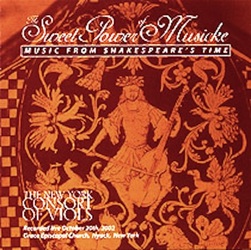Judith Davidoff
ARTIST STATEMENT:
As a performing and teaching musician, my field is string music. I began my music studies as a cellist, and my repertoire included works by classical composers who wrote for the solo cello or the string quartet. As the daughter of a composer, I have always been open to “new” music, and in more recent years I have been able to commission works for the musical forces I was engaged with. My music career began in Boston, my native city, and it was there that I first became aware of an ensemble performing what is today called “early music”. The reference is to music written in the Middle Ages, the Renaissance or the Baroque periods (roughly from the 12th through the 18th centuries.} Beginning in the fifties in this country, the “early music movement” began, and I joined it while it was still attracting followers. To perform early music properly, musicians were expected to learn to play the instruments as they were originally built and strung. In the case of cellists, we were encouraged to learn an earlier string iinstrument called the viol, or viola da gamba. It is with that instrument that I am often identified. I have been in demand as a soloist on the viol, and I direct an ensemble , or “consort” of viols, ”the New York Consort of Viols”. It is similar in make-up to the more modern string quartet, though sounding strikingly different and playing works by earlier composers. As a result of my residencies in both Turkey and Taiwan I have also studied the kemence (a Turkish Black Sea fiddle) and the erhu (a Chinese fiddle.) My performing and teaching at the Boston Museum of Fine Arts before relocating to New York allowed me to have access to that museum’s rich instrument collection. There I was privileged to learn to play the “nun’s fiddle”, the vielle and the baryton. As a board member of the WSAC I have been able to appear periodically at our gallery in my capacity as soloist, or in ensemble with colleagues in the New York Consort of Viols. Our concert fare is very varied, thanks to the large repertoire and “instrumentarium” we are able to draw on.
As a performing and teaching musician, my field is string music. I began my music studies as a cellist, and my repertoire included works by classical composers who wrote for the solo cello or the string quartet. As the daughter of a composer, I have always been open to “new” music, and in more recent years I have been able to commission works for the musical forces I was engaged with. My music career began in Boston, my native city, and it was there that I first became aware of an ensemble performing what is today called “early music”. The reference is to music written in the Middle Ages, the Renaissance or the Baroque periods (roughly from the 12th through the 18th centuries.} Beginning in the fifties in this country, the “early music movement” began, and I joined it while it was still attracting followers. To perform early music properly, musicians were expected to learn to play the instruments as they were originally built and strung. In the case of cellists, we were encouraged to learn an earlier string iinstrument called the viol, or viola da gamba. It is with that instrument that I am often identified. I have been in demand as a soloist on the viol, and I direct an ensemble , or “consort” of viols, ”the New York Consort of Viols”. It is similar in make-up to the more modern string quartet, though sounding strikingly different and playing works by earlier composers. As a result of my residencies in both Turkey and Taiwan I have also studied the kemence (a Turkish Black Sea fiddle) and the erhu (a Chinese fiddle.) My performing and teaching at the Boston Museum of Fine Arts before relocating to New York allowed me to have access to that museum’s rich instrument collection. There I was privileged to learn to play the “nun’s fiddle”, the vielle and the baryton. As a board member of the WSAC I have been able to appear periodically at our gallery in my capacity as soloist, or in ensemble with colleagues in the New York Consort of Viols. Our concert fare is very varied, thanks to the large repertoire and “instrumentarium” we are able to draw on.
All images and content © 1979-2023 West Side Arts Coalition unless otherwise indicated.




